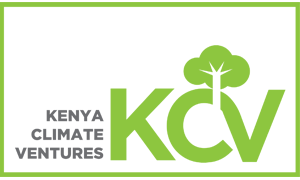In recent years, the complex set of interdependencies among water, energy and food systems – or what is commonly termed the water-energy-food (WEF) nexus – has emerged as a central issue within the overlapping scientific fields of sustainable development and climate change resilience. Energy inputs are required at all stages of the food value chain (ranging from on-farm production and harvesting, storage, processing and distribution to consumers). Processors of crop and livestock produce require reliable energy. For instance, there is increasing need for investments in off grid solar power commercial and industrial use. In Vihiga County, investment in 1.5 MW of solar power saves Williamsons Tea Factory up to 70% of expenses in power bills. Similarly, 47.5 KW of rooftop solar installed at Exotic EPZ Factory in Nairobi, saves the company 20% – 30% of its power bills.
Energy is an enabler of increased food security, agricultural productivity and improved access to water resources. The WEF nexus has the transformative power to build new energy access markets, to increase economic productive capacity and set African communities and economies on a path towards sustainable development and the meeting of the SDGs. Likewise, water is an essential input for agricultural production and food processing; Irrigated farming has increased smallholder incomes and assured livelihoods.
By 2050, global energy, water and food demand will increase by 50%, 30% and 60% respectively. Urbanisation is expected to be the key driver of this demand. Its demand on the commercial food production and distribution system implies that more investments are required for water conveyance, treatment and distribution. This also applies to the electricity generation and distribution to support productive sectors such as agriculture and agro-processing.
There is a lack of sufficient modern infrastructure to deliver water and energy services and to provide and distribute adequate food supplies. According to a study by Sustainability Institute, a combination of weak purchasing power and undeveloped systems of supply results in considerable water, energy and food insecurities amongst the Kenyan population.
How do we create a sustainable and effective balance in the global water, energy and food sectors to achieve the Sustainable Development Goals? Can proactively tailored financing instruments help realize this integrative and intersectoral approach? What is sustainable development without water, energy and food? Is investing in water and energy for food security and equitable food markets a possible solution?
Rethinking access to water and energy is critical, investing in nexus based opportunities is strategic to diversify revenue streams, support cash flow and strengthen the socio-economic sustainability of projects. In fact, integrated nexus businesses have posted better results – both financially – with better returns on investments, and in terms of sustainability – with a positive impact footprint on the community. An example is solar powered water distribution for irrigation and domestic use – in such business arrangements, consolidated smallholder farms become the anchor customer (for revenue assurance) while communal water supply hubs are complementary. Such a simple but structurally efficient business model optimizes community resilience (water and food security) while enhancing opportunities for rural industrialization.
Investment in WEF nexus opportunities must not be complex but context aligned to create meaningful impact. Irrigation technologies have incorporated solar power to reduce energy expenses and Carbon footprints. According to Sunculture and Sunken Limited and other distributors of solar irrigation pumps, smallholder farmers who have adopted solar powered irrigation pumps, have reduced their energy costs by 30%, achieved 80% water savings and increased their crop yield by 300% in Kenya. Limiting scalability of such a climate – smart technology is a lack of smallholder credit options; Financial institutions and retailers of solar water pumps need concessional capital and technical assistance to facilitate smallholder access to credit.
Kenya Climate Ventures (KCV), amongst other impact investors, has taken up the challenge to solve the complex, intersectoral financing challenges in the water and water for food nexus. Based upon variables like ticket size, earning potential and risk profile, KCV has applied a range of financing instruments – concessional debt, convertible debt and equity; which demonstrate affordability, patience while derisking enterprises to demonstrate commercial and traction for follow – on financing.
Essential to the organization’s unique and flexible investment criteria, is the in-depth understanding of the entrepreneurs, their track record and capacity to drive a transformative vision – harnessing the development of water and energy for food security in Kenya. To date, KCV has invested over KES 360 million on climate-smart enterprises promoting intersectoral climate resilient solutions in Kenya.
The writer of this article is the CEO of Kenya Climate Ventures












